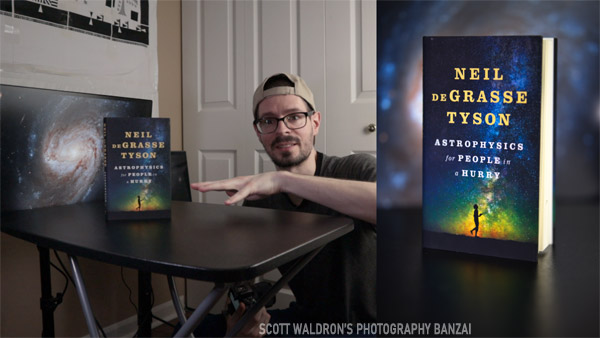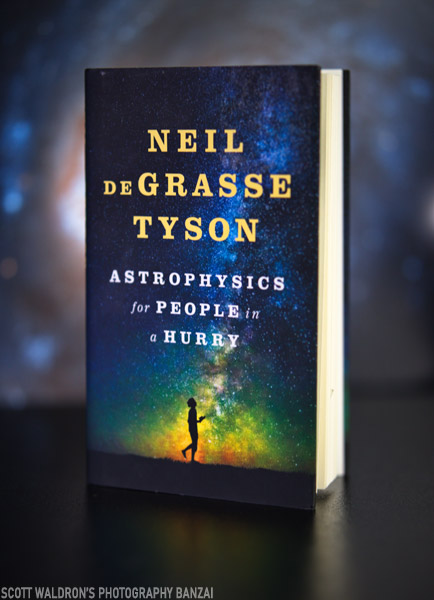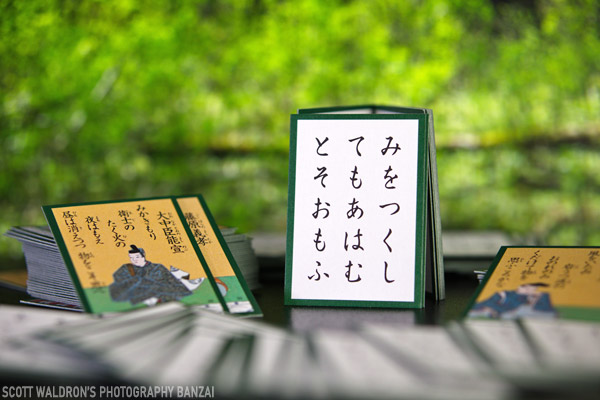Using a computer screen or TV as a backdrop is a fun way to spice up your indoor photography and videography work.
In that video I experiment with using a 19″ IPS LCD screen as the background in a few situations like miniature diorama photography with Legos, as a backdrop for a book, and adding interest to photos of Karuta playing cards. I also filmed a few quick video sequences using a “Lazy Susan” to spin around a product for b-roll clips.
For equipment I was using a Canon EOS M5 with a Sigma 56mm f1.4 DC DN lens. That focal length gave me enough of a narrow field-of-view that I could work with such a small computer monitor. If you try this out and use a larger screen you should have more flexibility in focal lengths.
Here are a few examples of what can be achieved…
It’s great for video work as well. As mentioned before I made a few clips of product b-roll with the screen adding something to the overall scene.
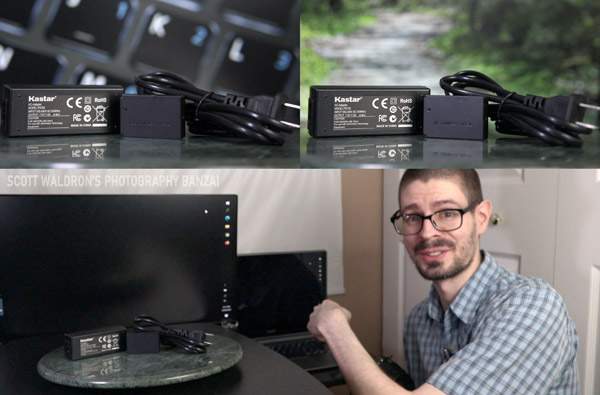
To take that a step forward you could record video clips or make interesting video sequences that would play on the monitor as your are recording your intended b-roll.
When selecting a screen for this technique you probably want to use one with a matte finish. If the screen is reflective that could cause havoc in the results, but I don’t have confirmation on that. It’s not something I can test with the equipment I have on-hand.
That might exclude most TV screens for this, but if you have one… try it out anyways and see how it works. If you are careful with your subject lighting and angles even a reflective background might be okay.
You need to strike a fine balance of the background brightness with the foreground. With a reflective screen it would benefit from being bright, but, in turn, you will have to manage the foreground. Maybe a combination of a bright background plus post processing of the foreground can work.
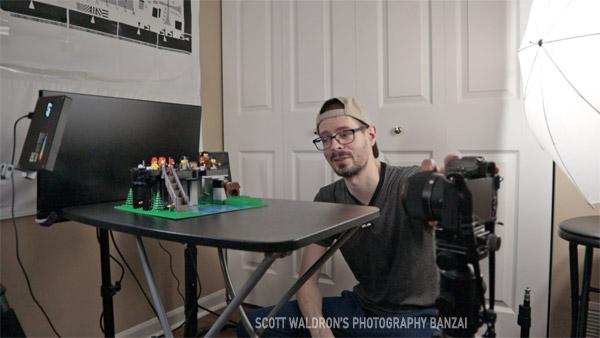
In my case I used a large constant umbrella covered light source with two daylight color LED bulbs putting out around 1100 lumens each. The second light was an Andycine Boling P1 LED panel to light the other side of objects. I used that in low power mode most of the time.
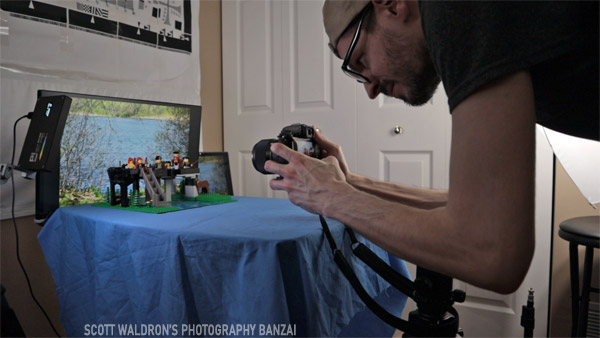
Most of the control came from camera positioning. 56mm on a 1.6x crop camera is pretty narrow, but that was necessary to get the screen filling up the background. The size of the subject mattered a lot as well.
If you angle the camera upwards you can exclude the table top from photos. I found that to be pretty good with the legos because they had a lot of vertical interest I could use. I also would push the stuff close to the screen so I could avoid a visible seam from the building block base’s edge to the screen.
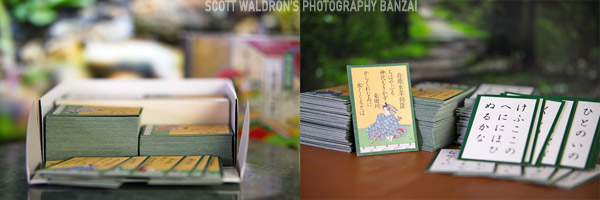
As for subjects, you need something that will provide vertical interest. With the Karuta playing cards I needed to arrange them so that a face of a card or two would be mostly visible in the frame. Otherwise simple stacks of cards didn’t look that interesting.
Throughout the example photos here you can also get an idea of what type of background images work with what foreground objects. If a path or something in the background doesn’t make logical sense with how it is positioned compared to the subject and the position of your camera, it won’t look that great. Aligning those three factors will help make a compelling result. With my combination of positioning and lens, the background image level of detail didn’t make a huge deal. Most of the details would be blurred out anyways.
This was a fun project and something I’ve been using occasionally in my thumbnail photos for the YouTube channel since then. I’d like to experiment with animated backgrounds in the future for video clips. A larger screen would be nice as well. That way I’d have more room to work with in my camera angles and subject sizes.
The Mandalorian streaming TV show has been using a similar technique on a huge scale to create digital sets. As flexible screen technology improves, maybe it will be possible for the average person to create a digital room of sorts. That’s an exciting prospect. With projection instead of screens it is already a possibility to some degree.
Check out some of the gear and products mentioned in this article:
Thumbnail featuring Neil deGrasse Tyson’s beautifully covered book “Astrophysics for People in a Hurry”:
https://amzn.to/3erl8d8
If you want your own set of Karuta cards you can find them here:
https://amzn.to/3ePW8gt
Check out the Sigma 56mm f/1.4 DC DN Contemporary Lens for Canon EF-M through my links:
B&H: https://bhpho.to/3bNQUjk
Amazon: https://amzn.to/3cC8pUb
eBay: https://ebay.to/2XBl1Fb
Walmart: https://bit.ly/2M3pxa6
That was the lens I used for the photos.
Look for the Canon EOS M5 through my links:
Used from KEH: https://shrsl.com/25j4e
eBay: https://ebay.to/2TCYfMe
Amazon: https://amzn.to/33OjJYX
B&H: https://bhpho.to/2J4NigC
This is the camera I used for the photos.
Get the Canon EOS M50 through my links:
B&H: https://bhpho.to/2GfvdKK
B&H accessory kit: https://bhpho.to/3etpKQ9
Amazon: https://amzn.to/2Rd7fIx
KEH Used: https://shrsl.com/25j4a
eBay: https://ebay.to/332UpPA
Walmart: https://bit.ly/34xq3Wa
Video kit: https://bhpho.to/2xVMDfj
This is the camera I used for the video.

